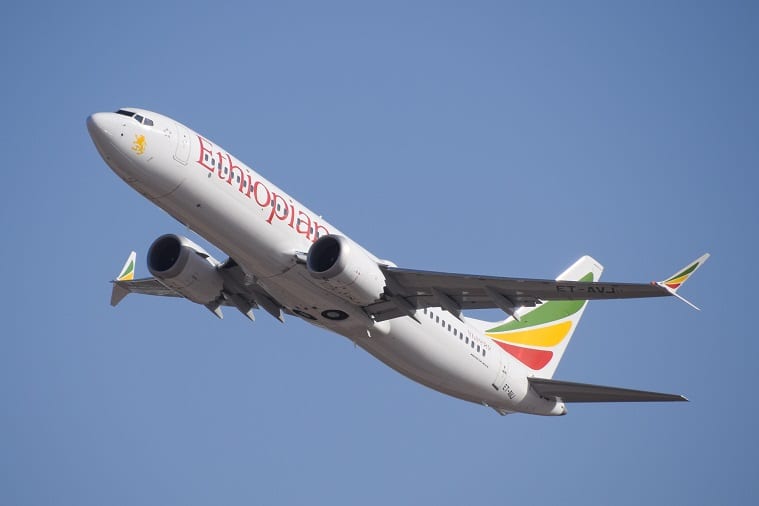Airlines
NTSB Publishes Additional Comments on Ethiopia’s Final Report on 737 MAX 8 Accident

The final report of the Ethiopian Aircraft Accident Investigation Bureau (EAIB) about the March 10, 2019, accident of Ethiopian Airlines Flight 302, a Boeing 737 MAX 8 aircraft, received additional comments from the National Transportation Safety Board.
The new comments, provided to the EAIB’s investigator-in-charge, detail the NTSB’s concerns about several of the findings in the final accident report. This is in addition to the comments the NTSB made public on Dec. 27 on the EAIB’s final accident report, which detailed the investigation’s insufficient attention to the human performance aspects of the accident.
The EAIB issued its final report without giving the NTSB the opportunity to review new information incorporated since the NTSB’s last review and provide comments ahead of the report’s issuance, as stipulated by the International Civil Aviation Organization’s Annex 13.
Although the NTSB agrees with the overall finding in the EAIB report related to the role the Maneuvering Characteristics Augmentation System (MCAS) and related systems played in the accident, the EAIB’s report contains findings the NTSB said are unsupported by evidence — for example, that aircraft electrical problems caused erroneous angle-of-attack (AOA) output.
In its final report, the EAIB wrote electrical anomalies that existed since the time of the accident airplane’s production caused the AOA sensor heater to fail, which resulted in the AOA sensor providing erroneous values that caused MCAS to repeatedly pitch the nose of the airplane downward until it struck the ground.
These are two new challenges Malaysia faces in purchasing FA50.(Opens in a new browser tab)
But the NTSB found the erroneous AOA sensor output was caused by separation of the AOA sensor vane due to impact with a foreign object, which was most likely a bird. During the accident investigation, the NTSB provided the EAIB with evidence supporting this finding, but that evidence was not included in the final report.
The EAIB’s conclusion that flight crews lacked the necessary MCAS paperwork was misrepresented, according to the NTSB, as Boeing had already given all 737 MAX operators the necessary information four months prior to the crash involving Ethiopian Airlines.
The complete text of the NTSB’s comments is available online.

Airlines
Air India Rolls Out A350s for Delhi-New York JFK and Newark Routes

In a major development for North American travelers, Air India has announced the deployment of its state-of-the-art Airbus A350-900 aircraft on two key routes: Delhi to New York and Delhi to Newark.
The service on the Delhi-New York route will commence on November 1, 2024, while the Delhi-Newark route will see its inaugural flight on January 2, 2025.
The introduction of the air india a350 will bring significant enhancements to Air India’s offerings, particularly with the launch of its Premium Economy class. air india retrofit This new class will feature 24 wide seats arranged in a 2-4-2 configuration, providing passengers with extra legroom and a more comfortable flying experience.
Soon, Air India aircraft will feature onboard WiFi & all-new cabins: Click here
“We are encouraged by the positive guest feedback we have received from the domestic deployment of our air india a350 interior to offer our hero product on the Delhi-New York JFK and Delhi-Newark routes. This is a significant leap forward for our U.S. operations that also underscores our commitment to continuous improvement,” said Campbell Wilson, Chief Executive Officer & Managing Director of Air India.
The A350’s Business class will set new standards with 28 private suites, each equipped with full-flat beds, direct aisle access, and personal wardrobes. Economy class will be configured to accommodate 264 passengers in a 3-4-3 layout. Across all cabins, passengers will enjoy the latest Panasonic eX3 in-flight entertainment system, offering over 2,200 hours of content.
Air India’s First A350-900: Interior, Routes, &Inflight Features: Click here
This strategic deployment marks a notable enhancement in Air India’s U.S. operations, with 60% of its flights to the U.S. now featuring new or upgraded cabin interiors. The air india new international routes currently operates 51 weekly flights to five U.S. destinations: New York JFK, Newark, Washington DC, Chicago, and San Francisco.
The revamped cabins, advanced in-flight entertainment systems, and improved service standards represent air india wifi commitment to providing a superior travel experience. “We believe this enhanced offering will solidify Air India’s position as a leading carrier and attract travellers seeking a world-class flying experience between India and the United States,” the airline stated.
Seats on these flights are now available for booking on Air India’s website, mobile app, and through travel agents, ensuring that passengers can easily plan their journeys on these newly upgraded routes.
Air India Economy vs Qatar airways economy: which is best?:Click here
-

 Travel1 week ago
Travel1 week agoAir India to Expand US Operations with Three New Routes After a Decade
-

 Travel2 weeks ago
Travel2 weeks agoWhy We Should Avoid These Stamps in a Passport
-

 Airlines1 month ago
Airlines1 month agoInvestigations Reveal Fake Chinese Titanium in Boeing and Airbus Jets
-

 Tech4 weeks ago
Tech4 weeks agoChina’s CATL Plans 1,800-Mile Electric Plane Launch by 2027
-

 Airport3 days ago
Airport3 days agoTop 10 Largest Airports in the World by Size
-

 Aerospace4 weeks ago
Aerospace4 weeks agoChina’s Fighter Jets Turn Wings into Autonomous Drones
-

 Airlines4 days ago
Airlines4 days agoAir India Rolls Out A350s for Delhi-New York JFK and Newark Routes
-

 Defence3 weeks ago
Defence3 weeks agoBoeing Enhances Chinook with New Engines and Block II Upgrades at $96 Million







